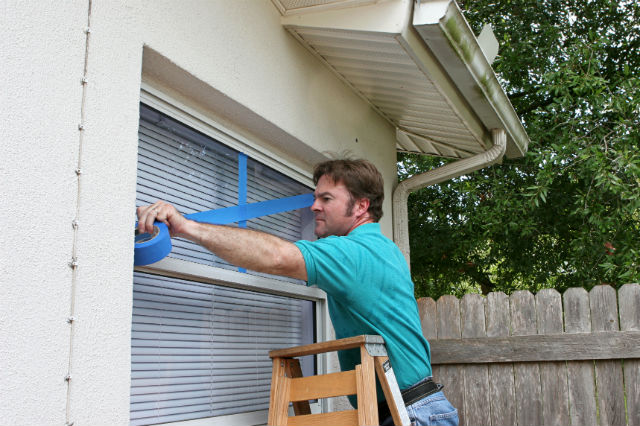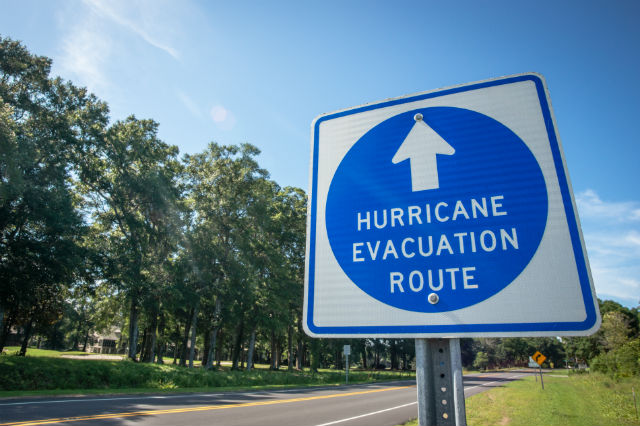Atlantic hurricane season runs from June 1 through Nov. 30 and usually hits its stride around mid-August through October. During this time of year, severe weather becomes top of mind as each named storm brings questions of when and where the next one will hit.
The National Oceanic and Atmospheric Administration predicts an “above normal” hurricane season for 2025, calling for 13 to 19 named storms. Of these, six to 10 could strengthen into hurricanes, including three to five that may reach major hurricane status.
Are you prepared for a weather emergency or evacuation? Take advantage of the calm long before a storm to plan for your family’s safety with these hurricane readiness tips.
To speak to a AAA insurance agent about your storm coverage, schedule an appointment today.
Sign Up for Storm Alerts
The Federal Emergency Management Agency (FEMA) mobile app will send you National Weather Service notifications on up to five locations and locate emergency shelters. You should keep an eye on local news and weather reports as well.
Brush up on how storm categories and other extreme weather terms are defined to better understand what’s in the forecast.
Pack a Bag
If you have to leave your home on short notice, you’ll want some essentials for you and everyone in your family. FEMA recommends packing things like medications, food and water, clothing and a first-aid kit. Your bag should be easy to carry and kept where you can grab it quickly.
Plan for Evacuation
State or local officials may issue evacuation notices in advance of dangerous storms. Check with your local department of transportation or emergency management office to familiarize yourself with your area’s evacuation routes.
Keep your car’s gas tank at least half-full and carry a kit of basic emergency supplies including snacks, bottled water, a first-aid kit, flashlights, flares, jumper cables, tools, a blanket and a change of clothes.
Establish a Communication Plan
Figure out how your family will stay in touch if you’re separated or lose power. You can choose an out-of-state contact for everyone to use and designate a meetup spot.

Get Supplies
You can build an emergency stockpile over time, but remember to replace items with a limited shelf life, like food and batteries. Your hurricane readiness supplies should include:
- One gallon of water per person per day for at least three days.
- At least a three-day supply of nonperishable food.
- Battery or hand-crank radio and extra batteries.
- Flashlight with extra batteries.
- Whistle to signal for help.
- A wrench and/or pliers.
- Dust mask to filter contaminated air.
- Plastic sheeting and duct tape.
- Moist towelettes, garbage bags and plastic ties for personal sanitation.
- Can opener if your food kit contains cans.
- Local maps.
- Prescriptions and reading glasses.
- Infant formula and diapers.
- Pet food and extra water for pets.
- Important family documents, such as insurance policies and bank account records. Store these in a waterproof container.
- Sleeping bags or warm blankets.
- Cash or traveler’s checks.
- Complete change of clothing, including a long-sleeved shirt and long pants.
- A fire extinguisher.
- Matches in a waterproof container.
- Feminine and personal hygiene supplies.
- Paper cups, plates, plastic utensils and paper towels.
Staying Put
If you’re not ordered to evacuate, stay indoors, away from windows and glass doors. Never use a generator or gasoline-powered equipment indoors or in partially enclosed areas. Such equipment should be outside, 20 feet away from doors, windows and vents.
Prepare Your Home
Powerful winds and floods are two of the greatest dangers presented by hurricanes. Ready your home by reinforcing doors, windows, walls and the roof. You should also bring loose, light objects like patio furniture and garbage cans inside and anchor objects you cannot bring inside, like grills. Trim or remove trees that are close enough to fall on buildings.
To prepare your home for heavy rains or flooding, keep gutters and drains free of debris. If possible, install a water alarm and sump pump with battery and battery backup. Stockpile plywood, plastic sheeting, sandbags and other emergency materials, too.
Remember that flood damage is not covered by standard homeowners insurance. You should talk to your insurance agent about purchasing coverage, which might have a 30-day waiting period before it takes effect.
Learn the ins and outs of hurricane deductibles.
For more information on hurricane readiness and other safety tips, visit www.ready.gov or download our free hurricane preparedness guide.
This article has been updated and republished from a previous version.
3 Thoughts on “Hurricane Readiness Basics”
Leave A Comment
Comments are subject to moderation and may or may not be published at the editor’s discretion. Only comments that are relevant to the article and add value to the Your AAA community will be considered. Comments may be edited for clarity and length.















It depends on what floor of the apartment building that one resides in. Living on the very bottom (or first floor), or even on the very top floor of the apartment building might render the tenant more vulnerable in the event of a nasty hurricane.
What if you live in an apartment…any suggestions?
Very interesting but, what if you live in an apartment in nyc .